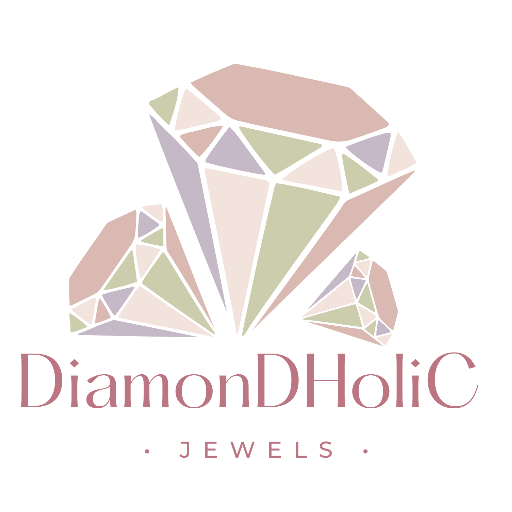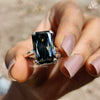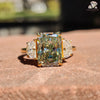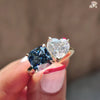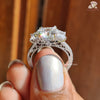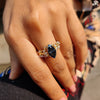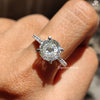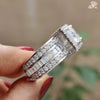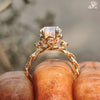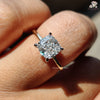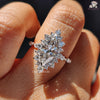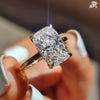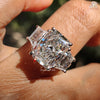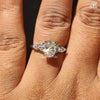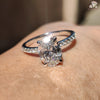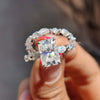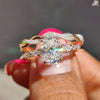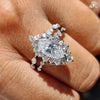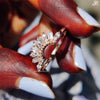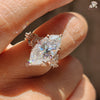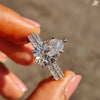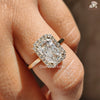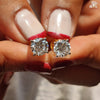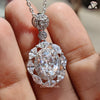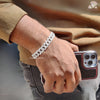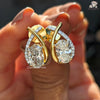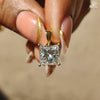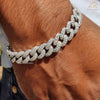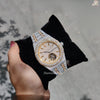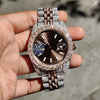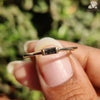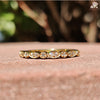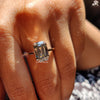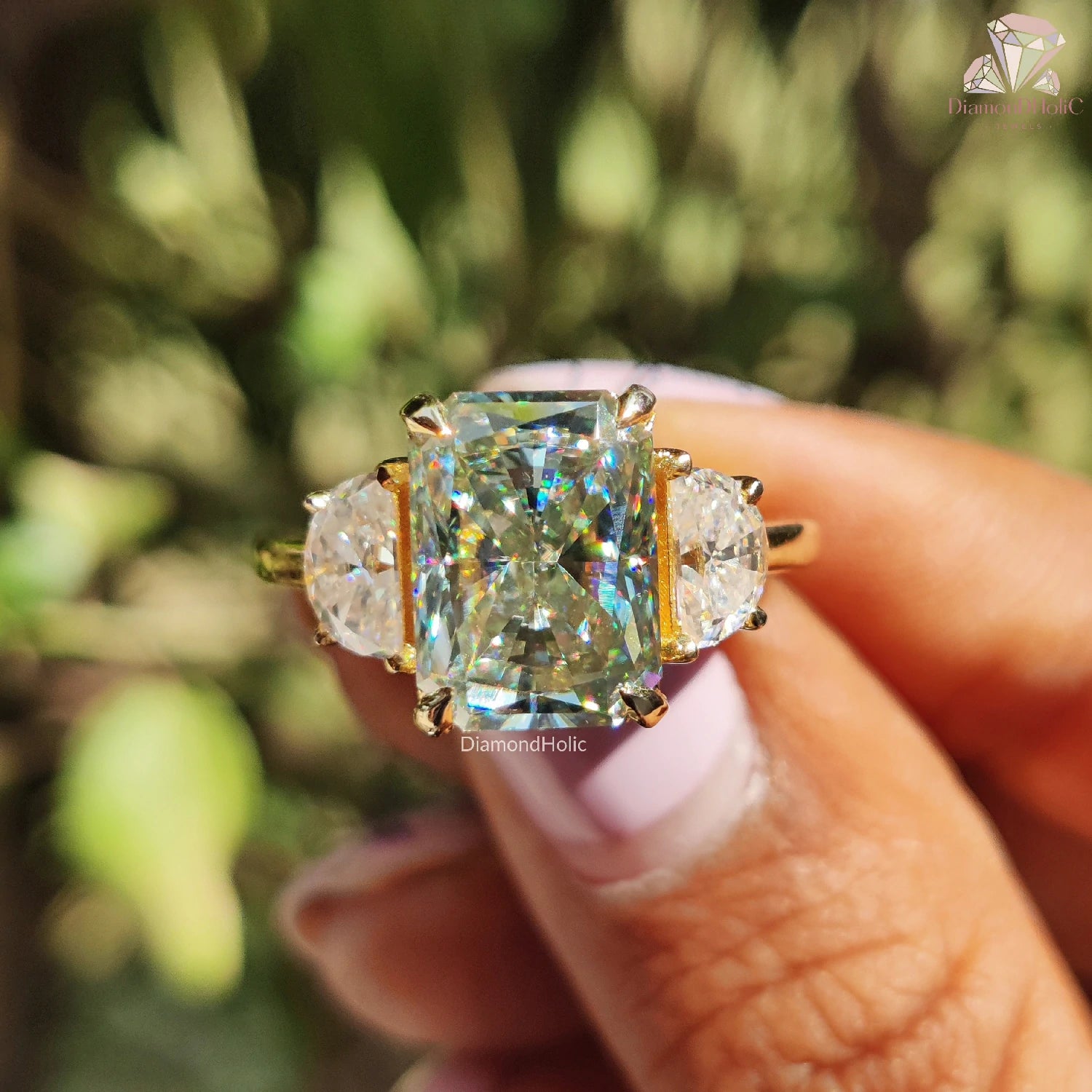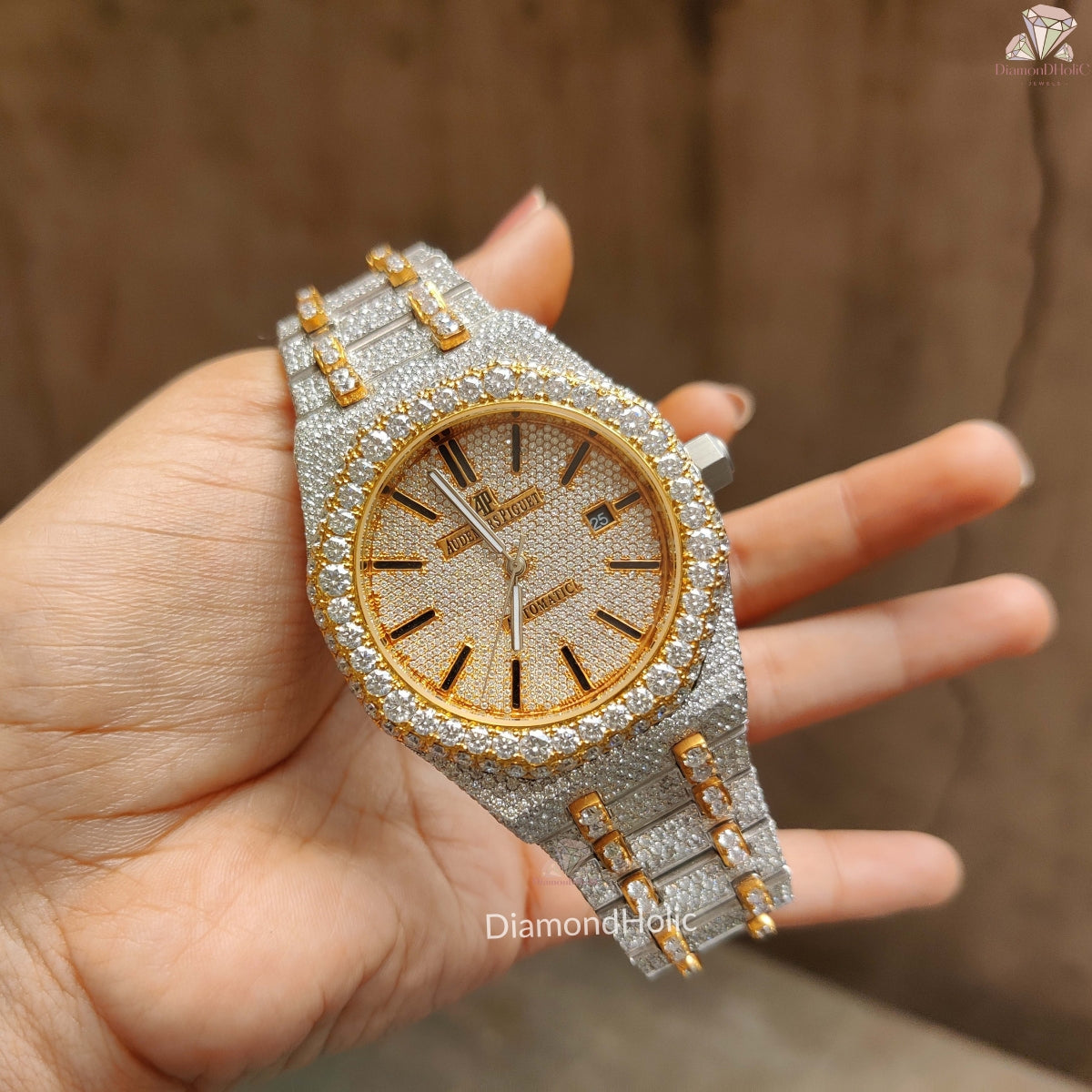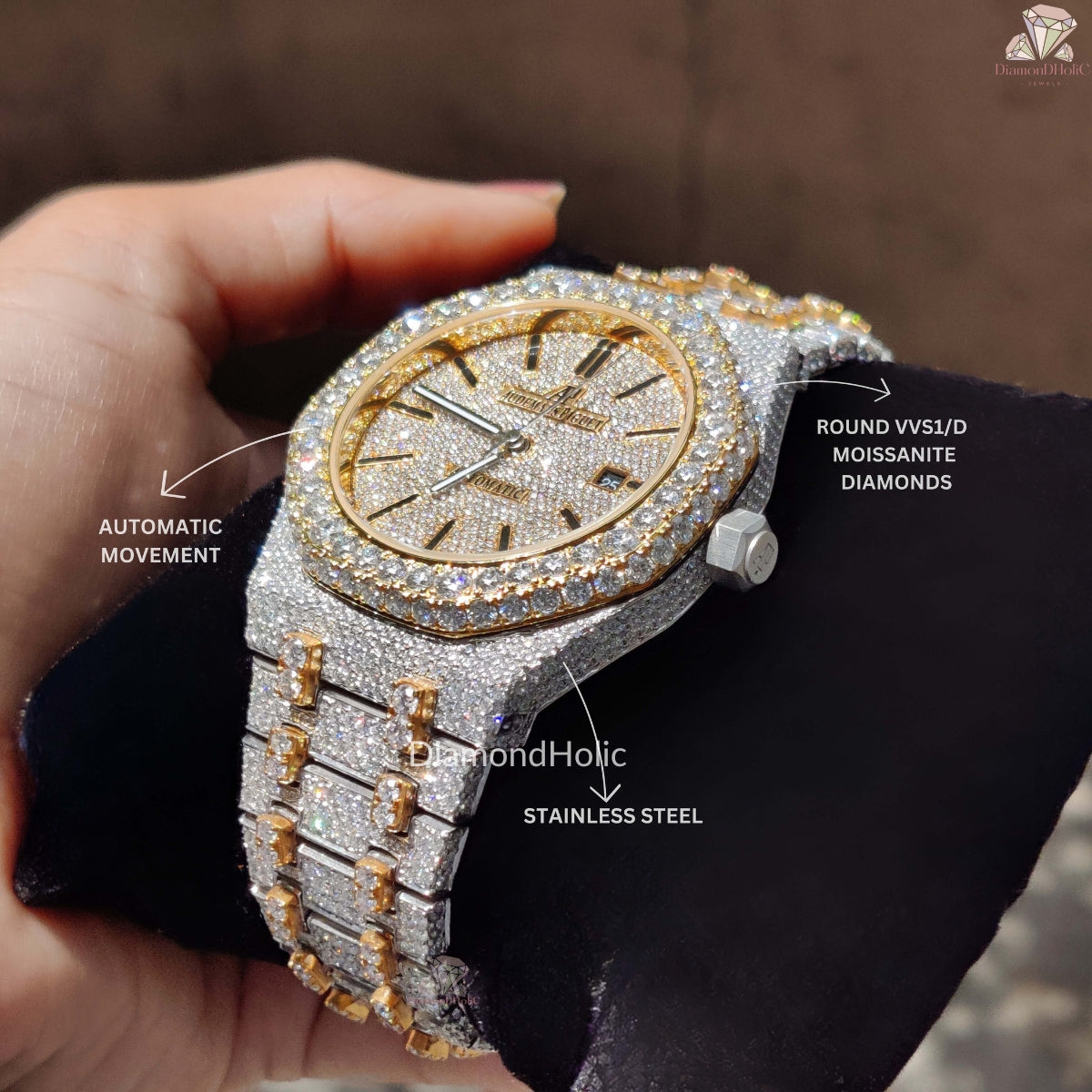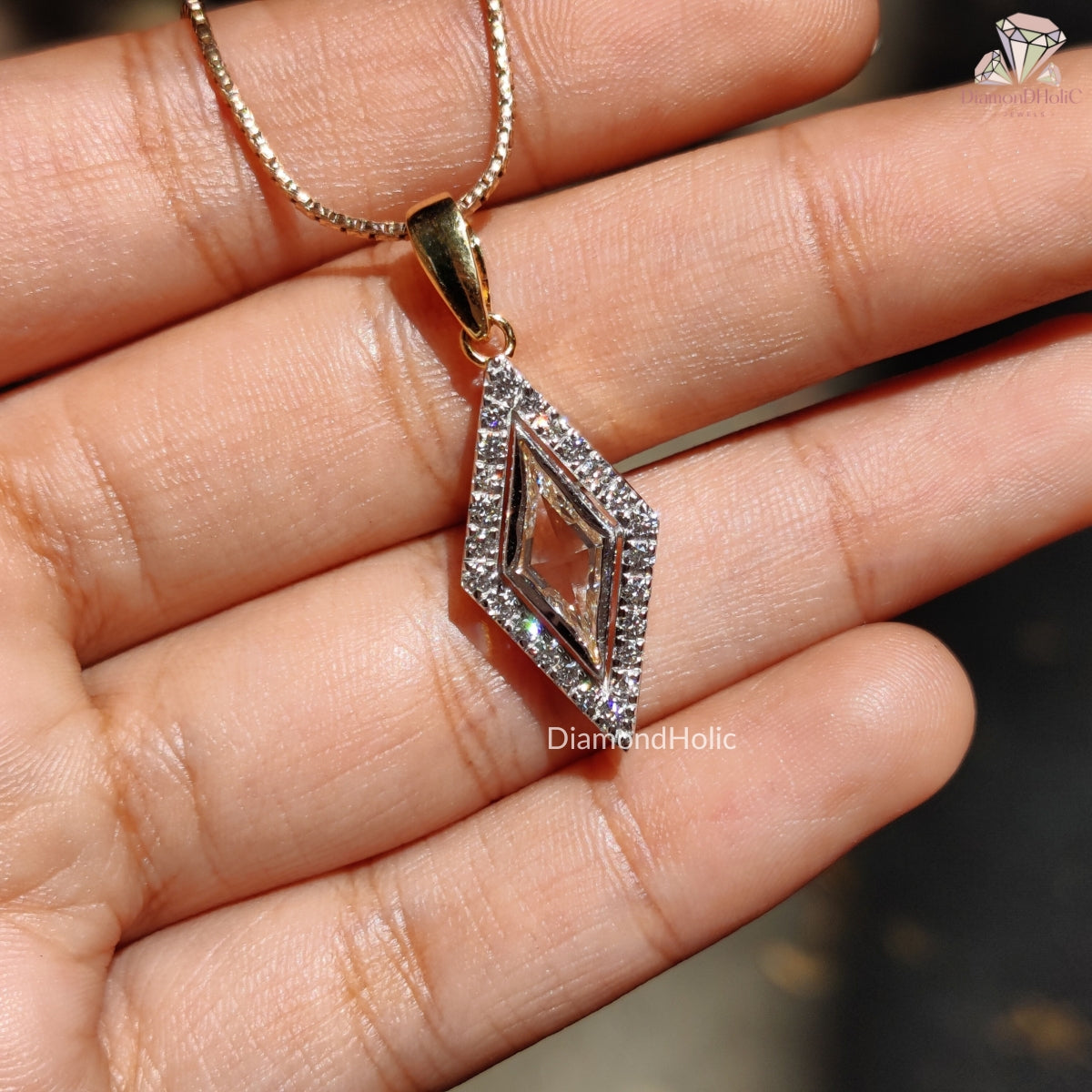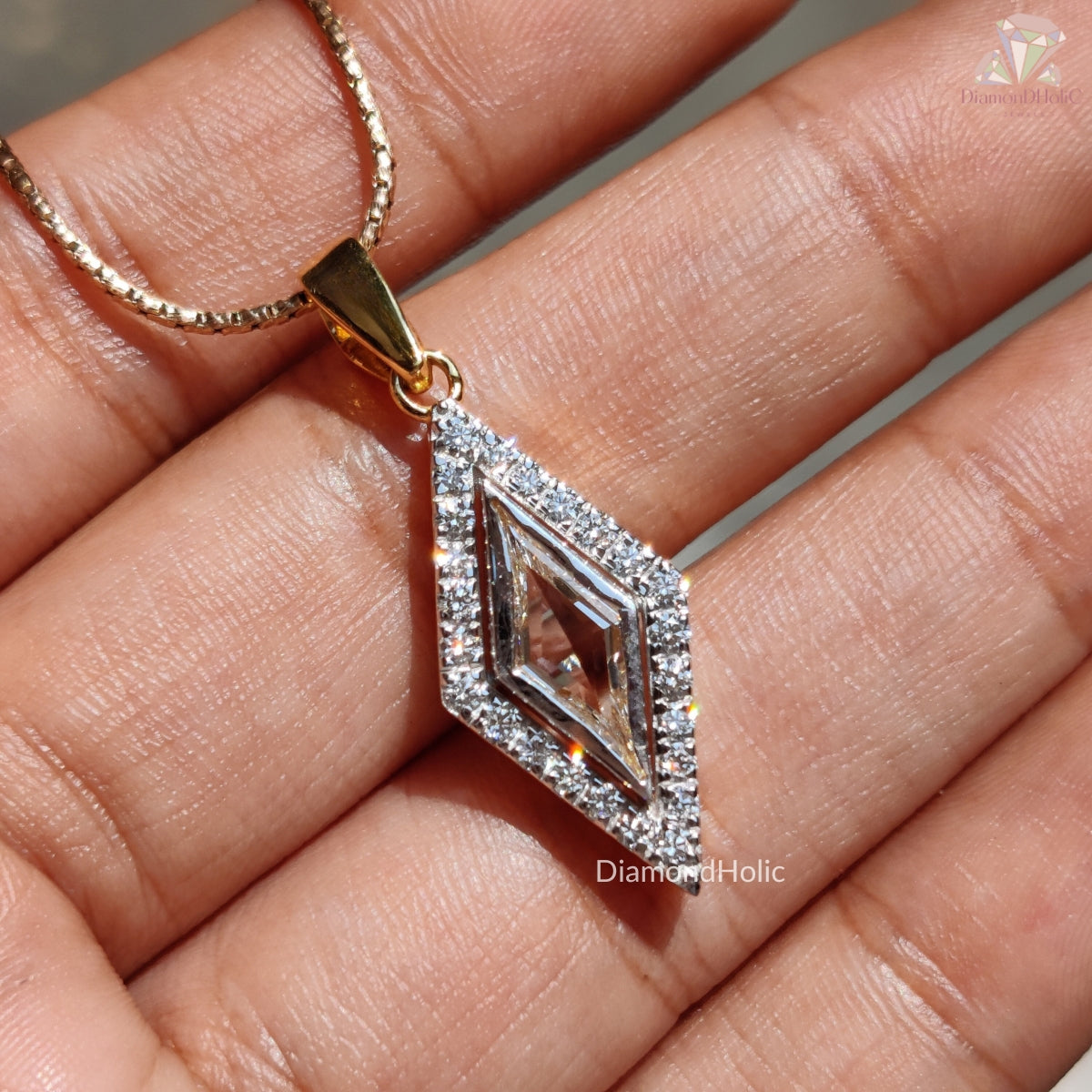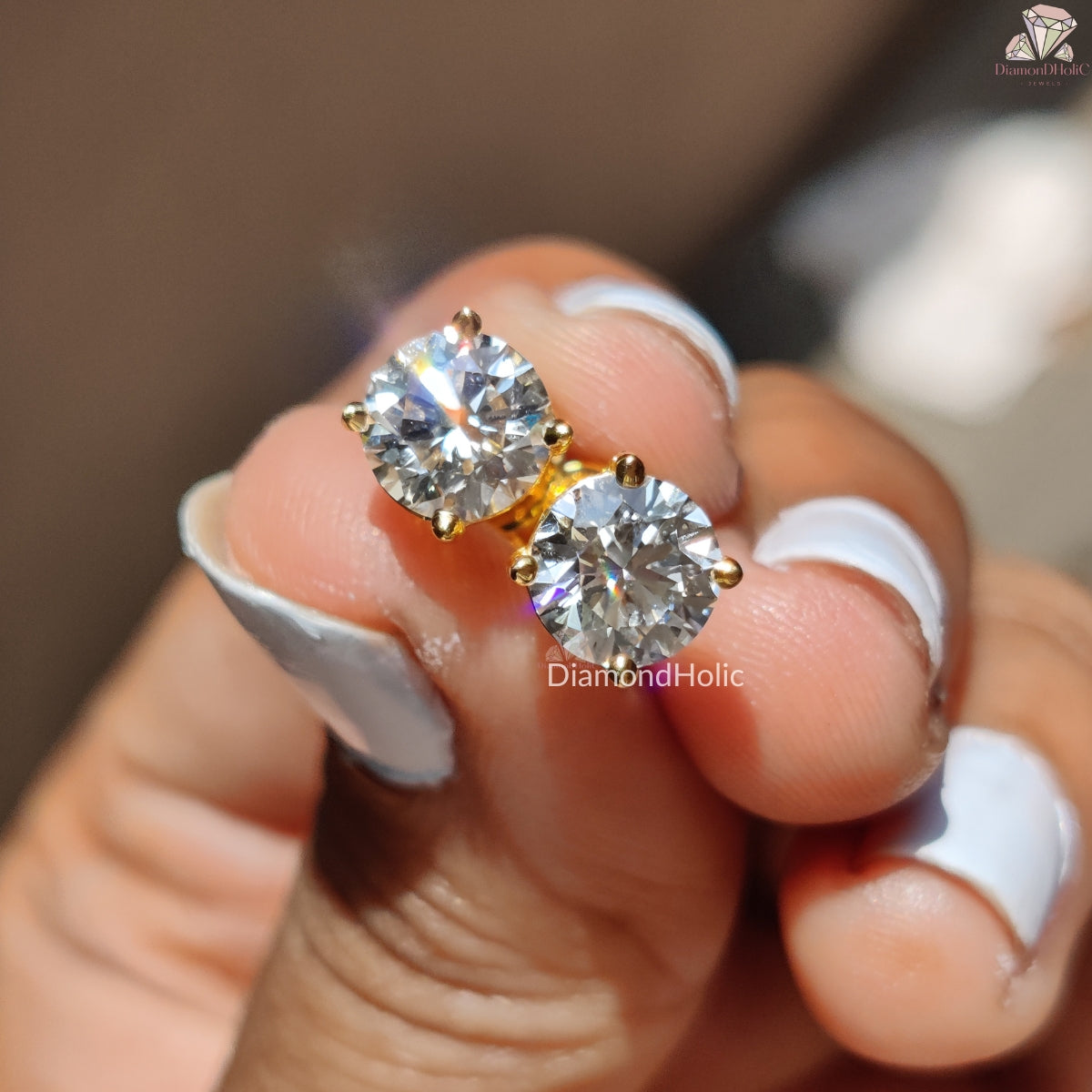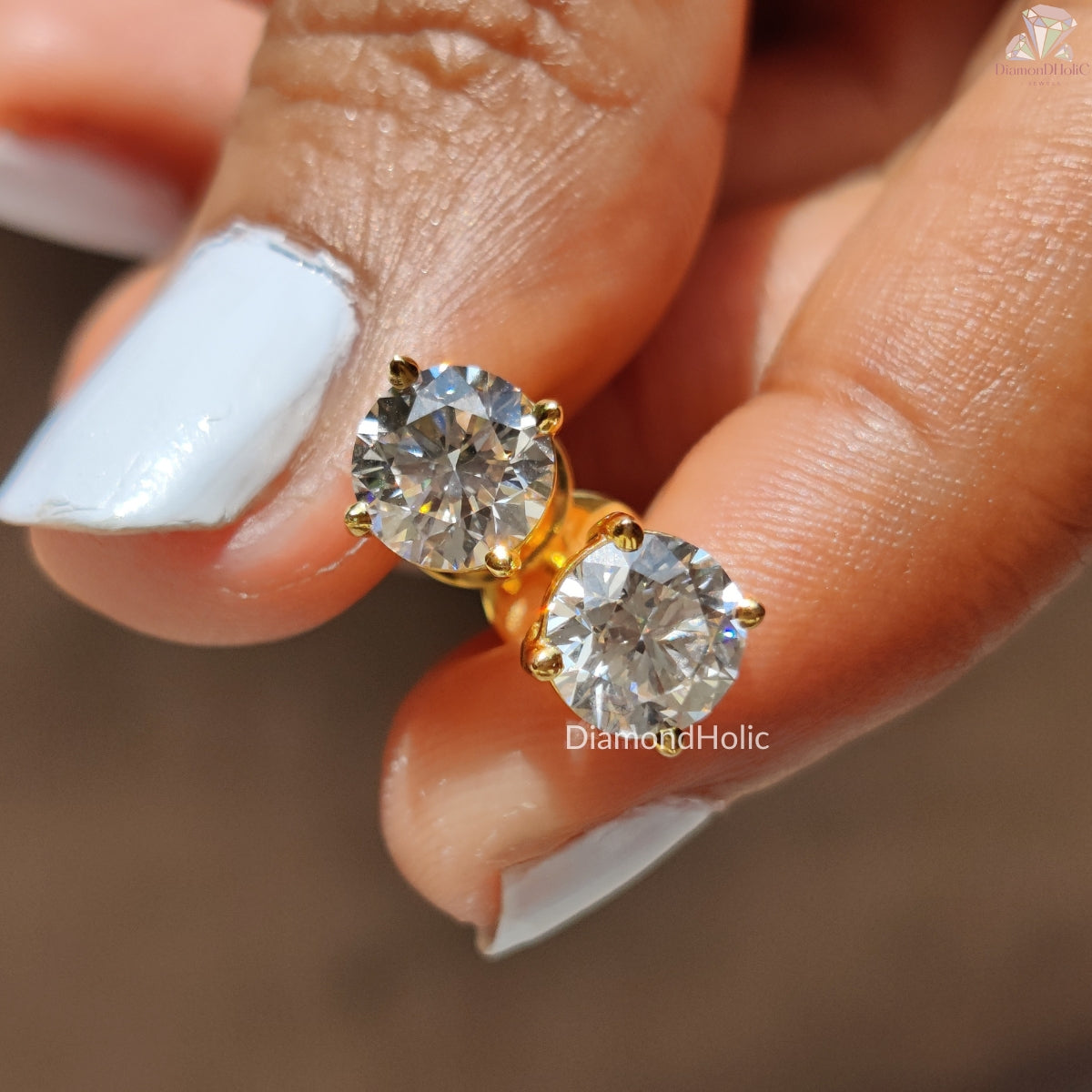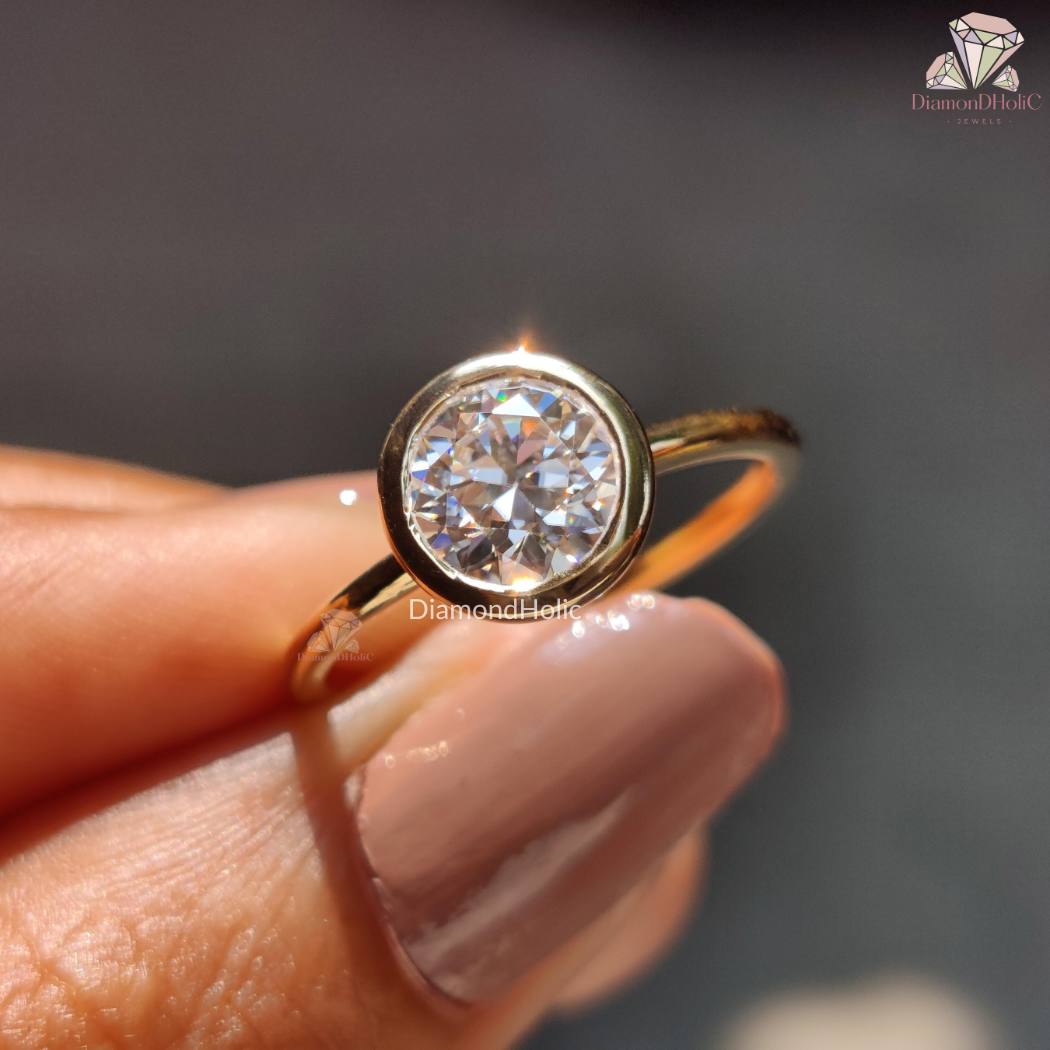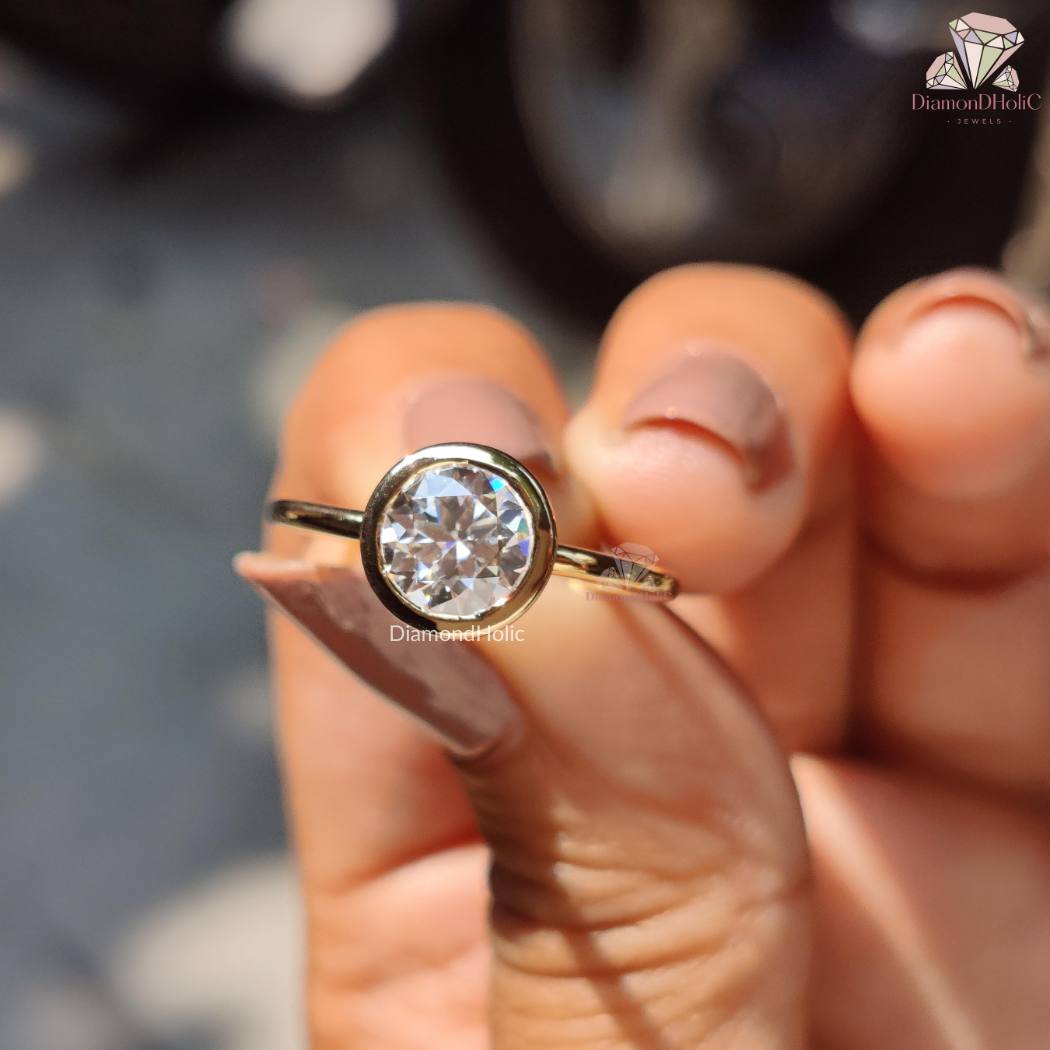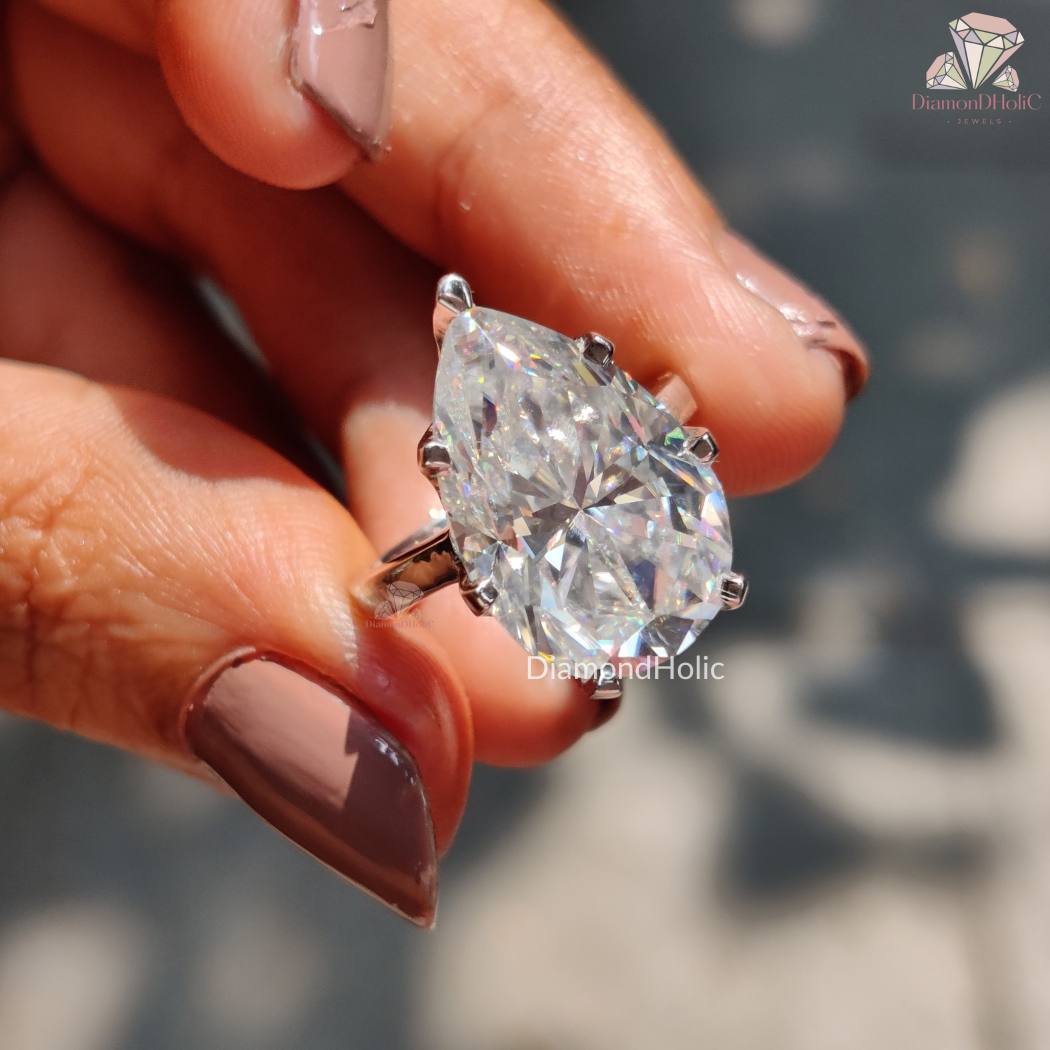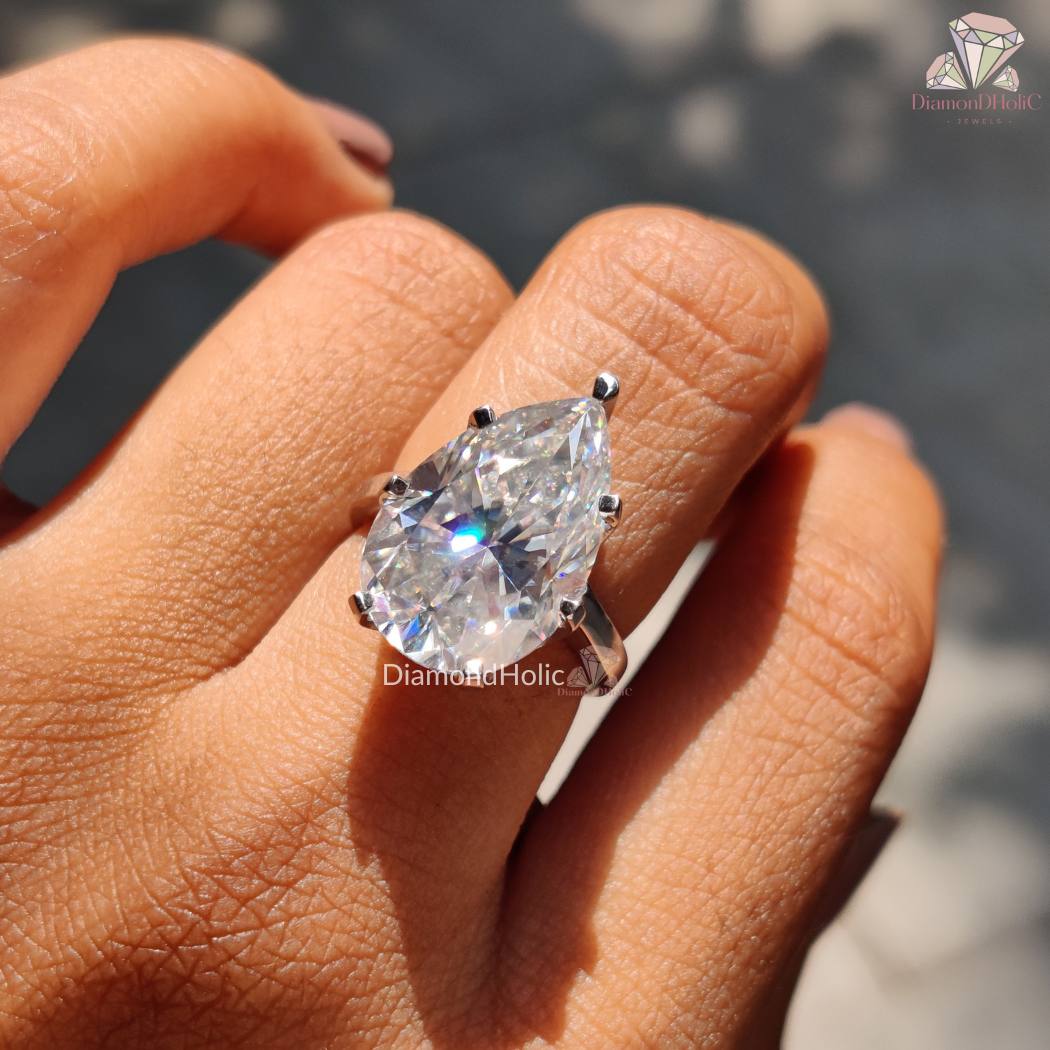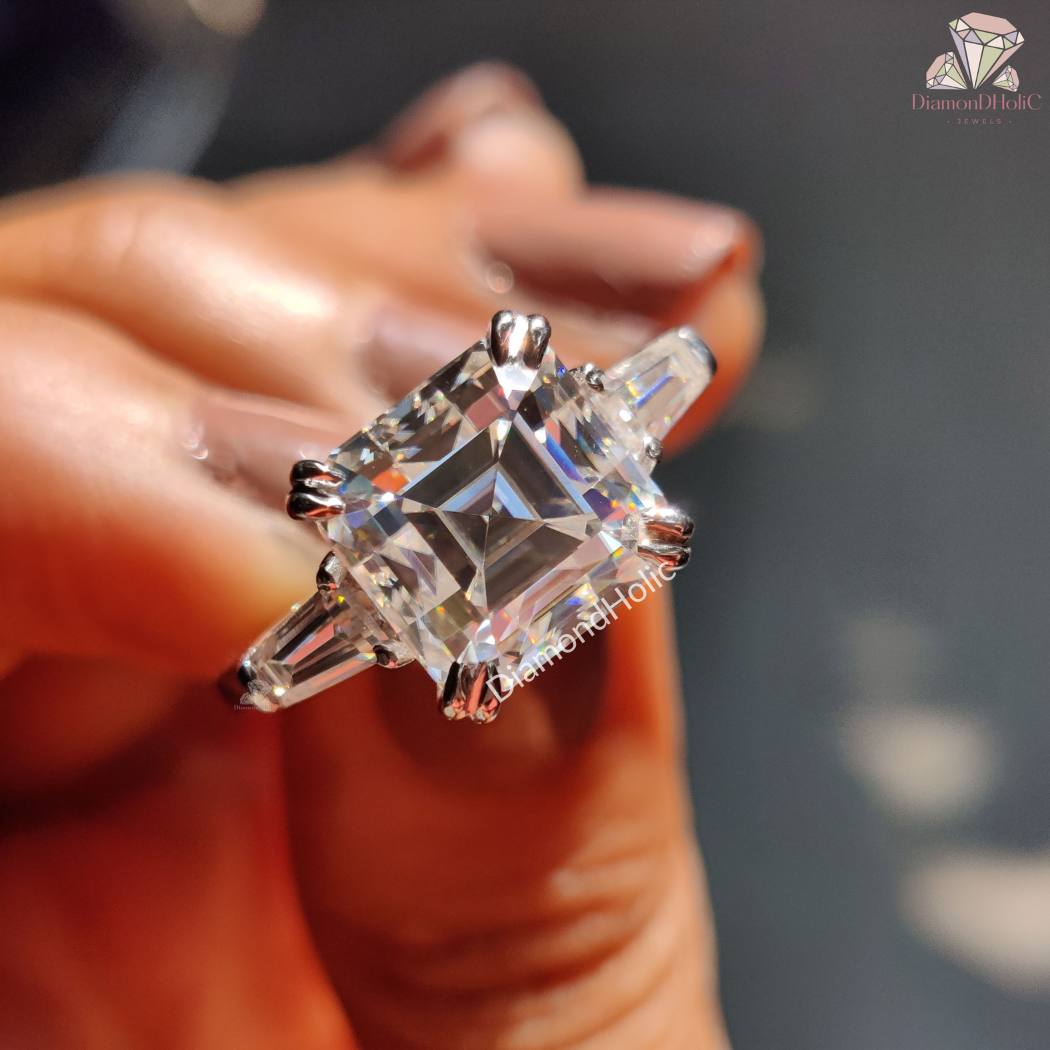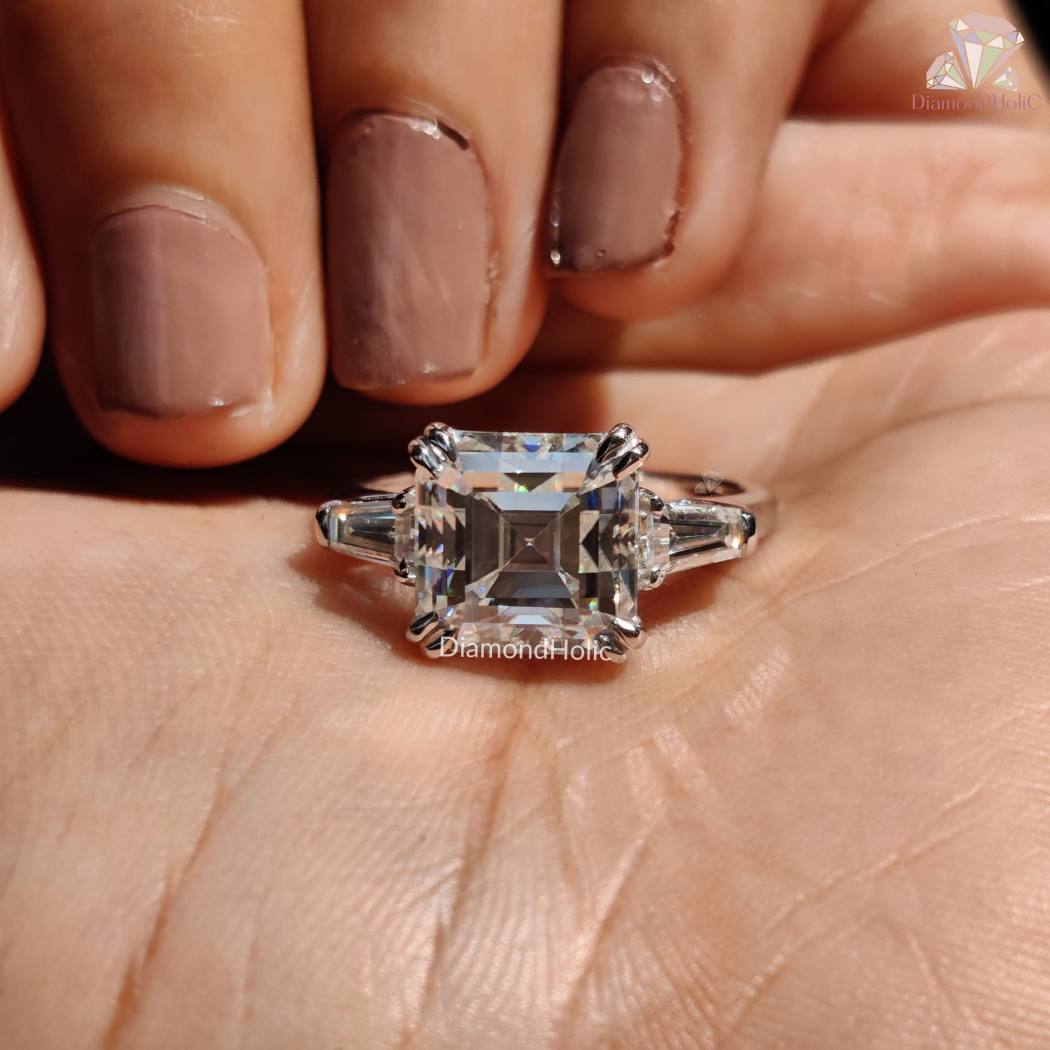What is Moissanite?
Moissanite is a gemstone made of silicon carbide. It was first discovered in 1893 by French chemist Henri Moissan in a meteorite crater, but the modern Moissanite used in jewelry is lab-created. It is renowned for its brilliance and fire, often outshining traditional diamonds
Key Features:
Brilliance and Fire: Moissanite has a higher refractive index (2.65-2.69) compared to diamonds, giving it exceptional sparkle and fire.
Durability: Moissanite is very durable, with a hardness of 9.25 on the Mohs scale, making it suitable for daily wear.
Color: Moissanite is available in a range of colors from colorless to shades of near-colorless. The most popular choices are those that appear closest to traditional diamonds in color.
Cost: Generally, Moissanite is significantly more affordable than diamonds of comparable size and quality.
Pros:
Affordable pricing
High brilliance and fire
Ethically produced with no mining involved
What are Lab-Grown Diamonds?
Lab-grown diamonds, also known as synthetic or cultured diamonds, are real diamonds that are created in a laboratory environment. They have the same physical, chemical, and optical properties as natural diamonds.
Key Features:
Authenticity: Lab-grown diamonds are chemically and physically identical to natural diamonds, made of pure carbon in a crystal structure.
Quality: They come in the same range of qualities as natural diamonds, including color, clarity, cut, and carat weight.
Cost: Lab-grown diamonds are typically 20-40% less expensive than natural diamonds due to the lower production costs and ethical benefits.
Environmental Impact: They are considered a more sustainable and environmentally friendly option compared to mined diamonds.
Pros: Lower cost than natural diamonds
Ethical and environmentally friendly
Real diamonds with the same properties as natural ones
Cons: Some people may prefer the uniqueness of natural diamonds
What are Natural Diamonds?
Natural diamonds are formed over millions of years deep within the Earth's mantle through high pressure and temperature conditions. They are the traditional choice for engagement rings and fine jewelry, known for their rarity and timeless value.
Key Features:
Rarity: Natural diamonds are rare and are often considered a symbol of eternal commitment and luxury.
Value: They generally hold a higher value due to their natural origin and the traditional market demand.
Variety: Available in a wide range of colors, cuts, and clarities, with each diamond having its unique characteristics.
Pros:
Timeless and classic appeal
High value and status
Natural origin with unique characteristics
Cons:
Higher cost compared to Moissanite and lab-grown diamonds
Environmental and ethical concerns associated with mining practices.
Understanding the 4 Cs of Diamonds
When selecting a diamond, understanding the 4 Cs—Cut, Color, Clarity, and Carat Weight—can help you make an informed choice. These four factors are used to assess the quality and value of a diamond, each contributing to its overall appearance and appeal.
Here’s what you need to know:
1. Cut
What is Cut?
The cut of a diamond refers to how well it has been shaped and faceted. It is one of the most crucial aspects of a diamond's overall beauty, influencing how it reflects light and how much sparkle it exhibits.
Key Points:
Quality: The quality of a diamond's cut affects its brilliance, fire, and scintillation. A well-cut diamond will reflect light more effectively, creating a dazzling display.
Grades: Cut grades typically range from Excellent to Poor. Factors considered include symmetry, proportions, and polish.
Shapes: Diamonds come in various shapes (round, princess, emerald, etc.), each with its unique cut characteristics.
Why It Matters: A diamond's cut directly impacts how much it sparkles and shines, making it essential for achieving the desired visual effect.
2. Color
What is Color?
Diamond color refers to the presence of any hues within the diamond, with the most desirable diamonds being completely colorless. Color grading measures the amount of color present, with a scale typically ranging from D (colorless) to Z (light yellow or brown).
Key Points:
Grades: The color scale starts at D (colorless) and progresses to Z (more noticeable color). Diamonds with higher grades (D-F) are rarer and often more expensive.
Invisible Color: In high-quality diamonds, slight variations in color may be imperceptible to the naked eye, but they can affect the diamond's overall value.
Why It Matters: The color of a diamond affects its appearance and can either complement or detract from its brilliance. Colorless diamonds are often the most sought after and valuable.
3. Clarity
What is Clarity?
Clarity measures the presence of internal or external flaws, known as inclusions and blemishes, respectively. The clearer the diamond, the higher its clarity grade.
Key Points:
Grades: Clarity is graded on a scale from Flawless (no inclusions or blemishes visible under 10x magnification) to Included (inclusions and/or blemishes visible to the naked eye).
Types: Common inclusions include tiny crystals or clouds, while blemishes may involve surface scratches or pits.
Why It Matters: A higher clarity grade generally means a more valuable and visually appealing diamond. However, many inclusions and blemishes are microscopic and do not affect the overall look of the diamond.
4. Carat Weight
What is Carat Weight?
Carat weight measures the size of the diamond. One carat is equivalent to 200 milligrams. Larger diamonds are rarer and often more valuable.
Key Points:
Measurement: Carat weight is directly proportional to the diamond's size, though it is only one factor influencing its overall value.
Impact on Value: Larger diamonds are more valuable per carat, but factors like cut, color, and clarity also play significant roles in determining overall value.
Why It Matters: Carat weight is a straightforward measure of size, making it a key factor for those looking for a specific look or impact. However, balancing carat weight with cut, color, and clarity ensures you get the most beautiful diamond within your budget.
Choosing the Right Diamond
When selecting a diamond, consider how each of the 4 Cs aligns with your preferences and budget. A well-balanced combination of these factors will help you find a diamond that not only fits your style but also offers exceptional beauty and value.
Feel free to reach out to our experts if you need personalized guidance in choosing the perfect diamond!
Choosing between Moissanite, lab-grown diamonds, and natural diamonds depends on your personal preferences, budget, and values. Moissanite offers exceptional sparkle and affordability, lab-grown diamonds provide the same quality as natural diamonds with a more sustainable footprint, and natural diamonds offer timeless value and uniqueness.
Each option has its own merits, and understanding these differences will help you select the perfect gemstone for your needs. If you have any further questions or need personalized advice, feel free to contact us!
Featured collection
Each piece in this collection is crafted with meticulous attention to detail, showcasing the finest materials and expert craftsmanship. Whether you're looking for a stunning engagement ring or a sophisticated pendant, these pieces exude grace and sophistication.
3 Color(s) Available
3 Color(s) Available
3 Color(s) Available
3 Color(s) Available
3 Color(s) Available
3 Color(s) Available
